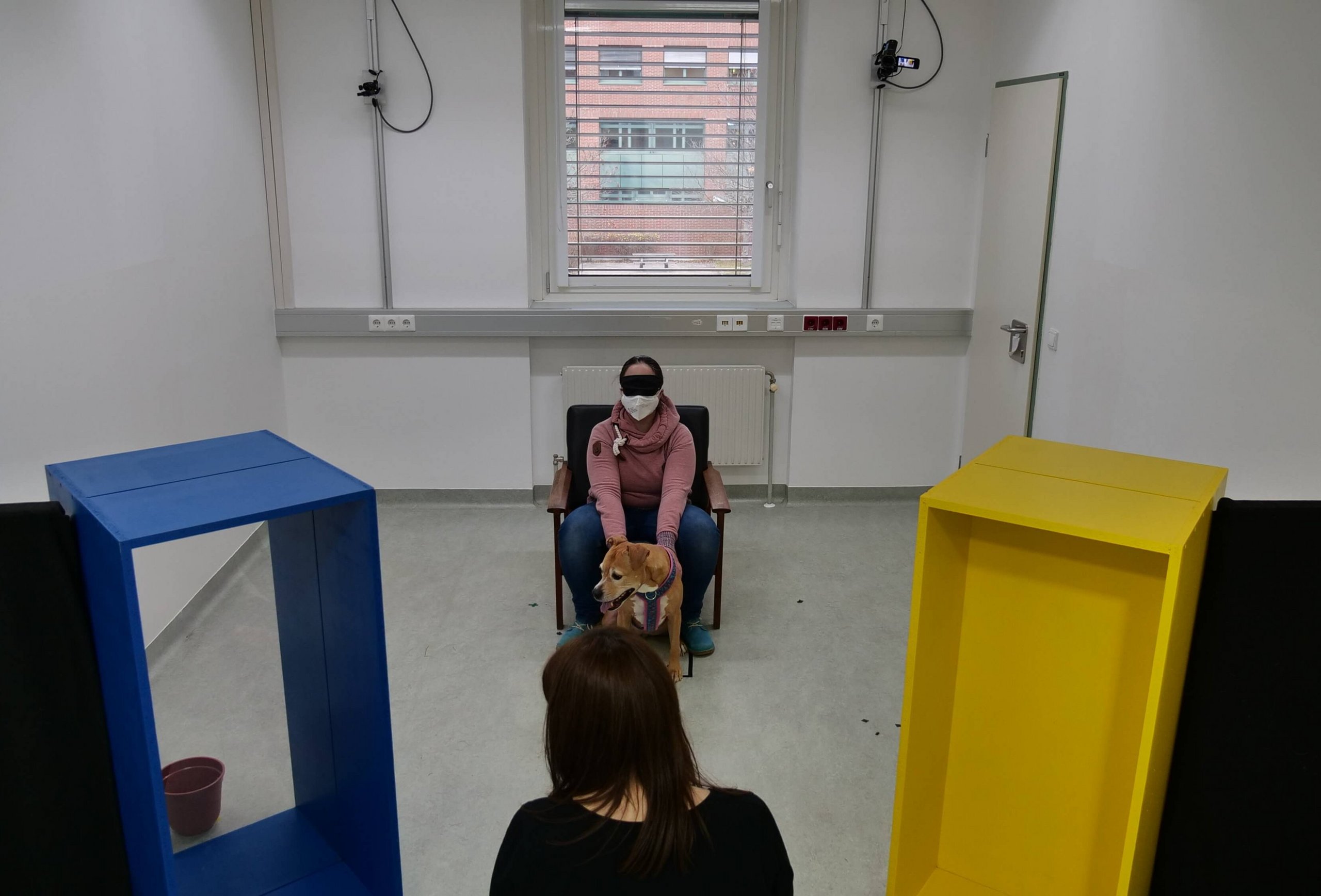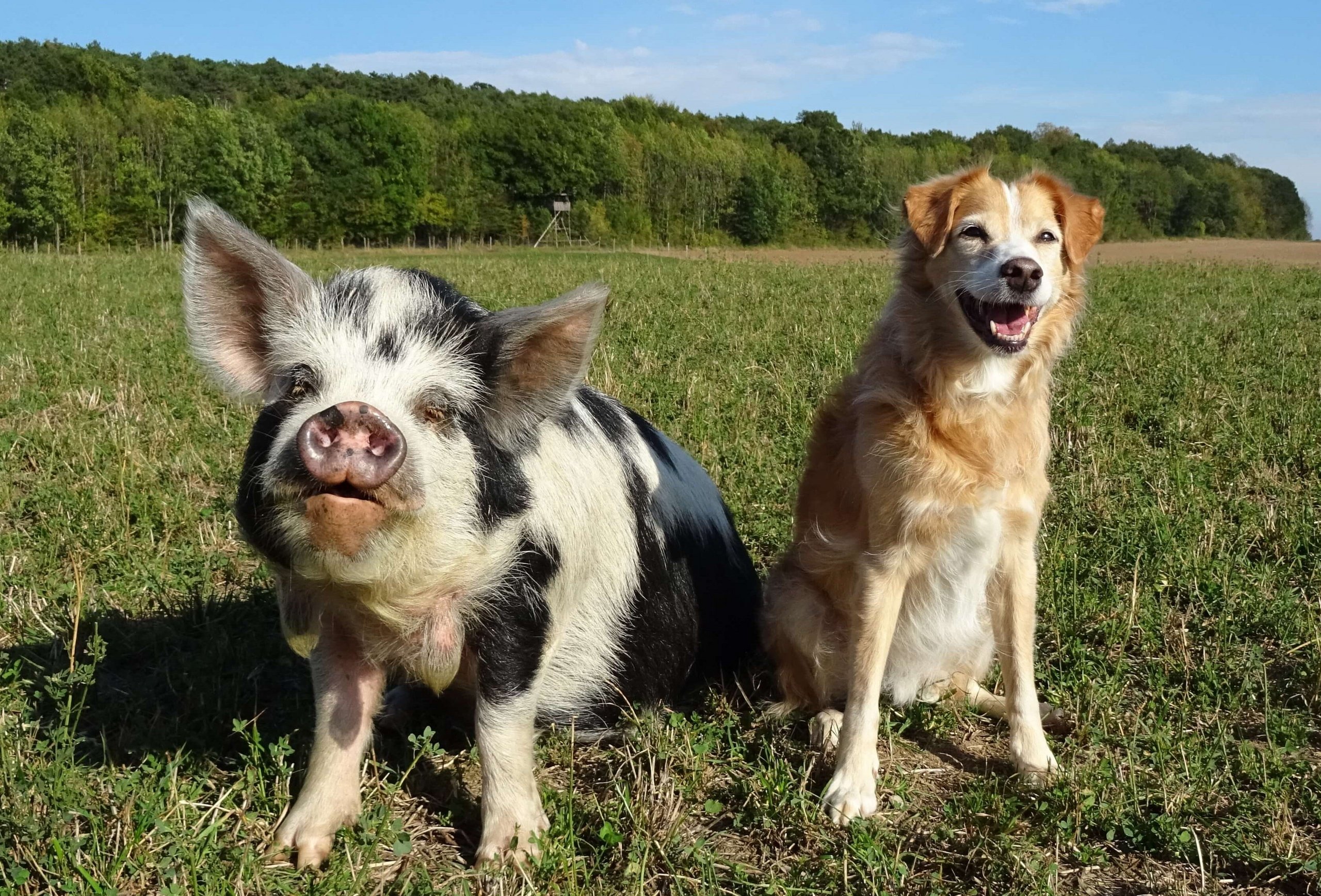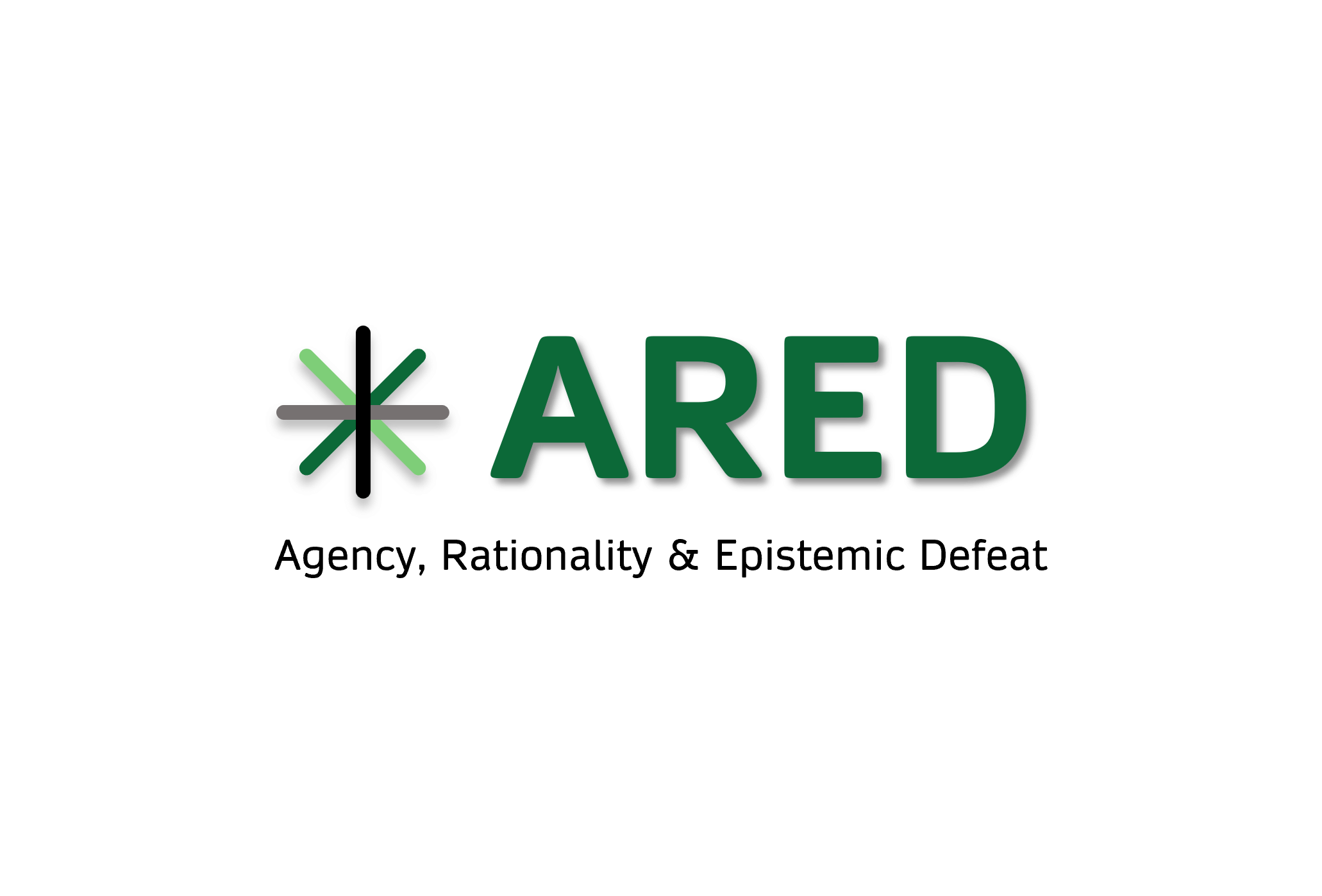- Cognition /
- Clever Dog Lab /
- Aktuelle Projekte und Publikationen
Projekte
Eine wichtige Frage bei der Erforschung der kognitiven Fähigkeiten von Hunden ist, wie sie uns Menschen verstehen, da sie beeindruckende Fähigkeiten zur Interaktion und Kommunikation mit uns zeigen, zu denen auch ein Verständnis von Sehen und Wissen gehören könnte.
PI: Ludwig Huber
Förderorganisation: FWF - Der Wissenschaftsfonds
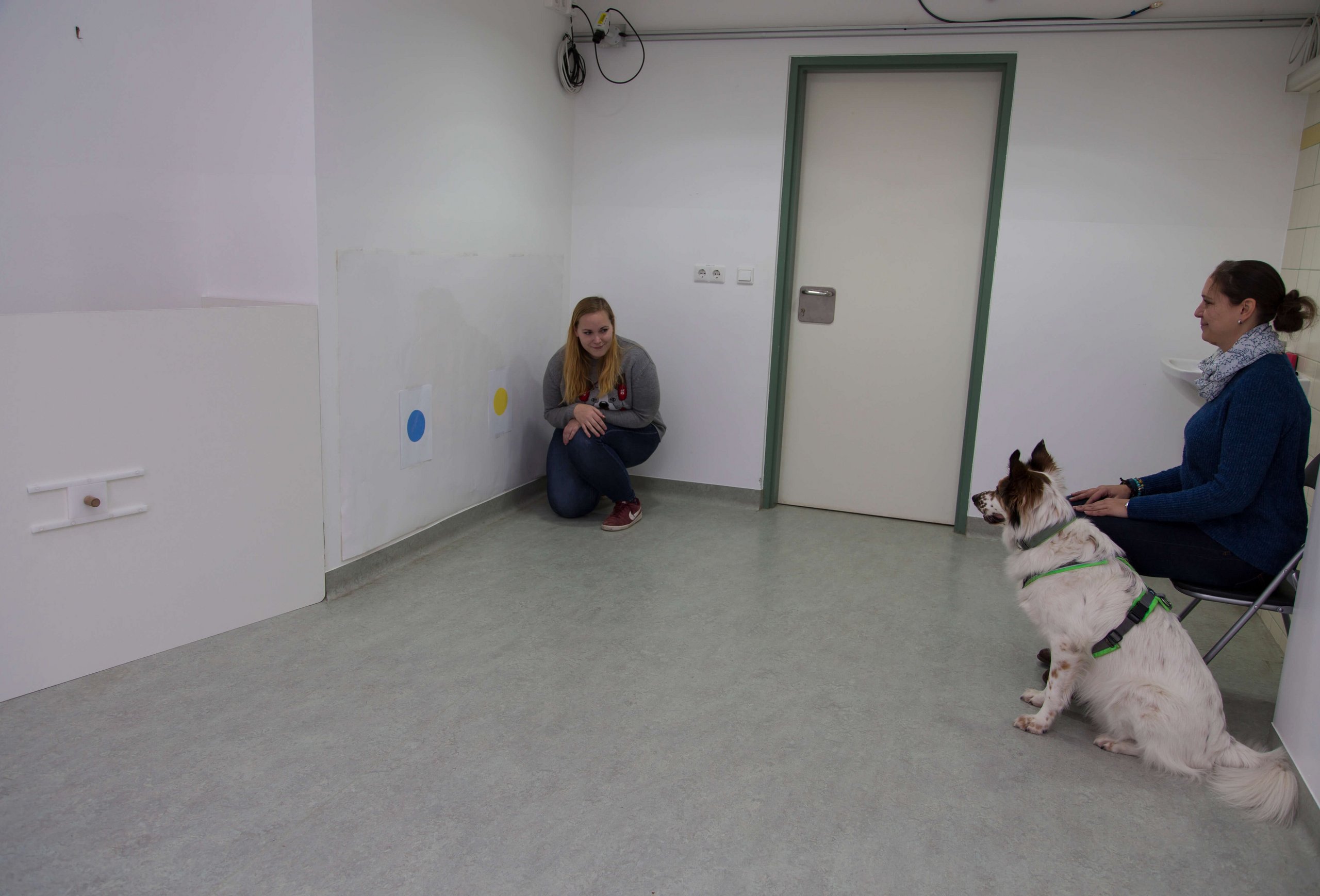
Das Projekt, das im CDL, bei Züchtern, im Tierheim und bei den Hundehalter:innen durchgeführt wird, widmet sich dem Phänomen der Übernachahmung.
PI: Ludwig Huber
Förderorganisation: FWF – Der Wissenschaftsfonds
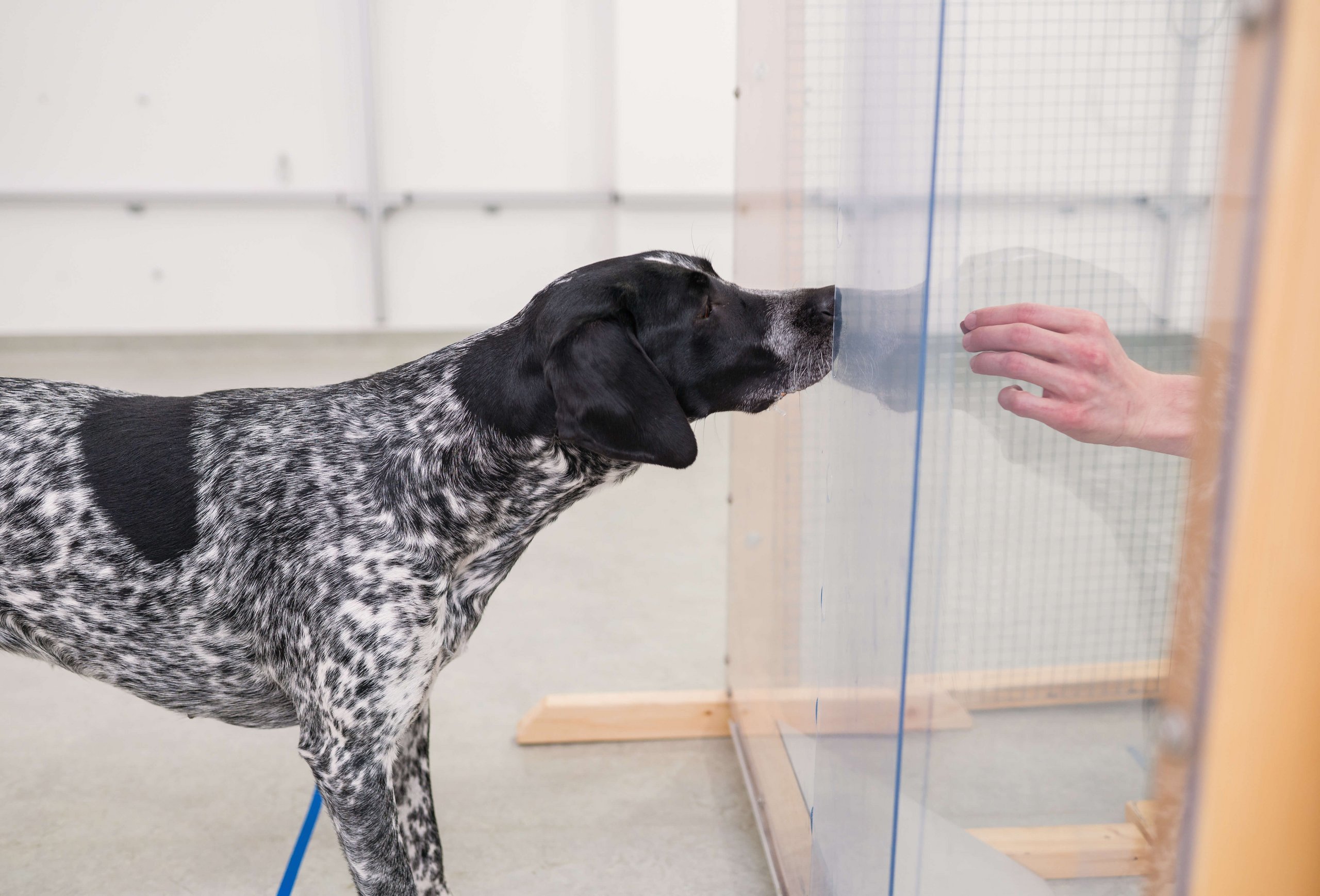
Das Erkennen von Absichten und die Sensibilität für ostensive Signale spielen eine entscheidende Rolle dabei, wie Menschen miteinander interagieren und wie wir lernen und lehren. Allerdings besitzen wir immer noch ein erstaunlich begrenztes Verständnis der Evolution, Verbreitung und Komplexität dieser Fähigkeiten bei nicht-menschlichen Tieren (abgesehen von einigen Primatenspezies). Hunde (Canis familiaris) sind aufgrund ihrer gemeinsamen Evolutionsgeschichte mit dem Menschen ein einzigartiges Modellsystem, um dieses Thema zu untersuchen
PI: Christoph Völter
Förderorganisation: FWF
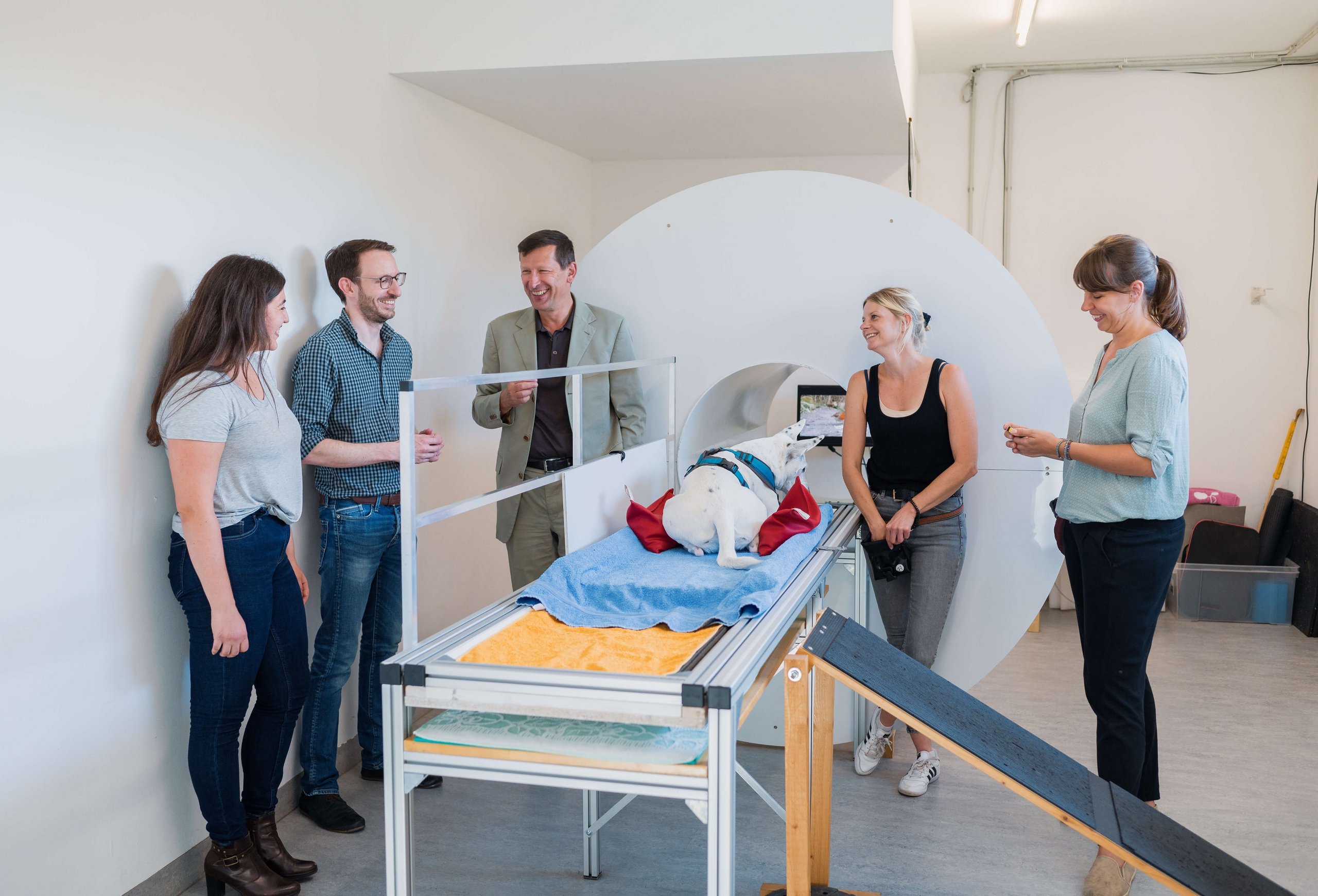
Das Ziel ist es, die Gehirnaktivitäten von Hunden, die ihre ausgefeilten sozialen Fähigkeiten und starken Bindungen zu Menschen fördern, mit fMRI zu bestimmen. Ebenso interessieren wir uns für Mechanismen der konvergenten Evolution, die zu komplexer sozialer Kognition bei Hunden und Menschen führen (z. B. Theory of Mind). Siehe auch: Comparative Canine Neuroimaging Unit.
PIs: Claus Lamm (UniVie), Ludwig Huber (Messerli), Christian Windischberger (MUW)
Förderorganisation: Wiener Wissenschafts- und Technologiefonds (WWTF)

Mit diesem PhD-Programm bilden wir die nächste Generation von KognitionsbiologInnen aus, um ihnen eine breite Grundlage in Evolutionstheorie, vergleichendem Denken, Versuchsplanung und Verhaltensanalyse zu vermitteln. Ein Projekt, das im CDL (in Zusammenarbeit mit Entwicklungspsychologen) durchgeführt wird, widmet sich dem Phänomen der Übernachahmung auf vergleichende Weise (Hunde vs. Kinder).
PI an der Vetmeduni: Ludwig Huber
Förderorganisation: FWF – Der Wissenschaftsfonds
ARED zielt darauf ab, die Ursprünge des menschlichen rationalen Denkens zu erforschen, indem verglichen wird, wie Hunde, Schweine und menschliche Kleinkinder ihre Überzeugungen bilden und revidieren. ARED ist ein interdisziplinäres Forschungsprojekt zwischen Philosophie, kognitiver Entwicklungspsychologie und kognitiver Ethologie, das von der Universität Stirling und uns durchgeführt wird.
PI an der Vetmeduni: Zsófia Virányi
Förderorganisation: UK Research and Innovation
Auf der Suche nach Angeboten für Master- oder Diplomarbeitsthemen? Hier geht es zu den derzeit verfügbaren Abschlussarbeiten.
Die jüngsten Publikationen (2020–)
Cimarelli, G; Range, F; Hann, K; Kotrschal, K; Gácsi, M; Virányi, Z(2024): Both humans and conspecifics provide social support to dog and wolf puppies. Animal Behaviour 2024; 209: 129-141
Guran, CA; Lonardo, L; Tünte, M; Arzberger, K; Völter, CJ; Hoehl, S; Huber, L; Lamm, C(2024): Investigating belief understanding in children in a nonverbal ambiguous displacement and communication setting. J Exp Child Psychol. 2024; 240:105830
Lonardo, L; Völter, CJ; Hepach, R; Lamm, C; Huber, L(2024): Do dogs preferentially encode the identity of the target object or the location of others' actions? Anim Cogn. 2024; 27(1):28
Alberghina, D; Bray, EE; Buchsbaum, D; Byosiere, S-E; Espinosa, J; Gnanadesikan, GE; Guran, C-NA; Hare, E; Horschler, DJ; Huber, L; Kuhlmeier, VA; MacLean, EL; Pelgrim, MH; Perez, B; Ravid-Schurr, D [and 4 others](2023): ManyDogs Project: A Big Team Science Approach to Investigating Canine Behavior and Cognition. Comparative Cognition and Behavior Reviews 2023; 18: 59-77
Boch, M; Wagner, IC; Karl, S; Huber, L; Lamm, C(2023): Functionally analogous body- and animacy-responsive areas are present in the dog (Canis familiaris) and human occipito-temporal lobe. Commun Biol. 2023; 6(1):645
Byosiere, SE; Mundry, R; Range, F; Virányi, Z(2023): Selective responding to human ostensive communication is an early developing capacity of domestic dogs. Dev Sci. 2023 26 (4)
Gerwisch, K; Weissenbacher, K; Proyer, M; Huber, L(2023): A pilot study into the effects of PTSD-assistance dogs' work on their salivary cortisol levels and their handlers' Quality of life. J Appl Anim Welf Sci. 2023; 1-13
Guran, CA; Sladky, R; Karl, S; Boch, M; Laistler, E; Windischberger, C; Huber, L; Lamm, C(2023): Validation of a new coil array tailored for dog functional magnetic resonance imaging studies. eNeuro. 2023; 10(3):ENEURO.0083-22.2022
Huber, L; Lonardo, L(2023): Canine perspective-taking. Anim Cogn. 2023; 26(1):275-298
Huber, L; Lonardo, L; Völter, CJ(2023): Eye Tracking in Dogs: Achievements and Challenges. Comparative Cognition and Behavior Reviews 2023; 18: 33-58
Lonardo, L; Völter, CJ; Lamm, C; Huber, L(2023): Dogs Rely On Visual Cues Rather Than On Effector-Specific Movement Representations to Predict Human Action Targets. Open Mind (Camb). 2023; 7:588-607
Mackie, L; Huber, L(2023): Socially priming dogs in an overimitation task. Front Psychol. 2023; 14:1063132
Pali-Schöll, I; Dale, R; Virányi, Z(2023): Dogs at home and at the workplace: effects on allergies and mental health. Allergo Journal International 2023; 32: 138-143.
Riemer, S(2023): Therapy and Prevention of Noise Fears in Dogs-A Review of the Current Evidence for Practitioners. Animals (Basel). 2023; 13(23):3664
Völter, CJ; Lonardo, L; Steinmann, MGGM; Ramos, CF; Gerwisch, K; Schranz, MT; Dobernig, I; Huber, L(2023): Unwilling or unable? Using three-dimensional tracking to evaluate dogs' reactions to differing human intentions. Proc Biol Sci. 2023; 290(1991):20221621
Völter, CJ; Starić, D; Huber, L(2023): Using machine learning to track dogs’ exploratory behaviour in the presence and absence of their caregiver. Animal Behaviour 2023; 197: 97-111
Völter, CJ; Tomašić, A; Nipperdey, L; Huber, L(2023): Dogs' expectations about occlusion events: from expectancy violation to exploration. Proc Biol Sci. 2023; 290(2003):20230696
Huber, L; Kubala, D; Cimarelli, G(2022): Overimitation in Dogs: Is There a Link to the Quality of the Relationship with the Caregiver?. Animals (Basel). 2022; 12(3):326
Karl, S; Anderle, K; Völter, CJ; Virányi, Z(2022): Pet dogs' Behavioural Reaction to Their Caregiver's Interactions with a Third Party: Join in or Interrupt? Animals (Basel). 2022; 12(12):1574
Lonardo, L; Versace, E; Huber, L(2022): Recognition of rotated objects and cognitive offloading in dogs. iScience. 2022; 25(2):103820
Völter, CJ; Huber, L(2022): Pupil size changes reveal dogs’ sensitivity to motion cues. iScience. 2022; 25(9):104801
Lonardo, L., Völter, C. J., Lamm, C., & Huber, L. (2021). Dogs follow human misleading suggestions more often when the informant has a false belief. Proc Roy Soc B 288(1955), 20210906.
Völter, C. J., & Huber, L. (2021). Expectancy violations about physical properties of animated objects in dogs. PsyArXiv.
Cimarelli, G; Marshall-Pescini, S; Range, F; Berghänel, A; Virányi, Z (2021): Relationship quality affects social stress buffering in dogs and wolves. Anim Behav 178: 127-140
Wetzels, S.U., Strachan, C.R., Conrady, B. et al. (2021) Wolves, dogs and humans in regular contact can mutually impact each other’s skin microbiota. Sci Rep 11, 17106.
Cimarelli, G., Schoesswender, J., Vitiello, R., Huber, L., & Virányi, Z. (2021). Partial rewarding during clicker training does not improve naïve dogs’ learning speed and induces a pessimistic-like affective state. Anim Cogn 24(1), 107–119.
Karl, S., Sladky, R., Lamm, C., & Huber, L. (2021). Neural Responses of Pet Dogs Witnessing Their Caregiver’s Positive Interactions with a Conspecific: An fMRI Study. Cerebral Cortex Comm 2(3), tgab047.
Boch, M., Karl, S., Sladky, R., Huber, L., Lamm, C., & Wagner, I. C. (2021). Tailored haemodynamic response function increases detection power of fMRI in awake dogs (Canis familiaris). Neuroimage 224, 117414.
Boch, M; Wagner, IC; Karl, S; Huber, L; Lamm, C (2021): Similarities and differences of face and body perception in the dog (Canis familiaris) and human brain. biorxiv
Völter, C. J., Karl, S., & Huber, L. (2020). Dogs accurately track a moving object on a screen and anticipate its destination. Sci Rep 10(1), 1–10.
Benz-Schwarzburg, J., Monso, S., & Huber, L. (2020). How dogs perceive humans and how humans treat dogs: Linking cognition research with ethical discussions. Front Psychol 11, 584037.
Huber, L., Salobir, K., Mundry, R., & Cimarelli, G. (2020). Selective overimitation in dogs. Learning & Behavior, 48(1), 113–123.
Völter, C., Karl, S., & Huber, L. (2020). Dogs accurately track a moving object on a screen and anticipate its destination. Sci Rep 10(1), 19832.
Völter, C., Lambert, M., & Huber, L. (2020). Do nonhuman animals seek explanations? Anim Behav Cogn 7(3), 446–451.
Karl, S; Boch, M; Virányi, Z; Lamm, C; Huber, L (2020): Training pet dogs for eye-tracking and awake fMRI. Behav Res Methods 52(2):838-856
Chapagain, D; Wallis, LJ; Range, F; Affenzeller, N; Serra, J; Virányi, Z (2020): Behavioural and cognitive changes in aged pet dogs: No effects of an enriched diet and lifelong training. PLoS One 15(9):e0238517
Range, F; Brucks, D; Virányi, Z (2020): Dogs wait longer for better rewards than wolves in a delay of gratification task: but why? Anim Cogn 23 (3) 443-453.
Turcsán, B; Wallis, L; Berczik, J; Range, F; Kubinyi, E; Virányi, Z (2020): Individual and group level personality change across the lifespan in dogs. Sci Rep 10(1):17276
Ujfalussy, DJ; Virányi, Z; et al. (2020): Comparing the tractability of young hand-raised wolves (Canis lupus) and dogs (Canis familiaris). Sci Rep 10(1):14678
